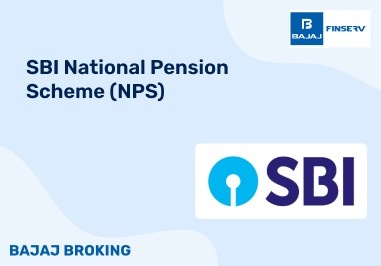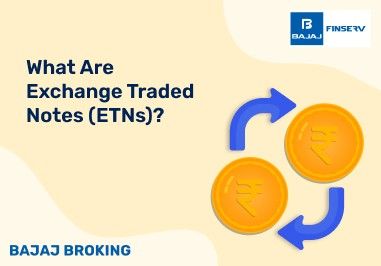The National Pension System (NPS) is a long-term investment tool to secure retirement. However, withdrawal from the National Pension System (NPS) refers to accessing the accumulated funds in your account, either partially or entirely, under specific conditions.
Now, while the NPS is designed to promote disciplined retirement savings, certain circumstances such as emergencies, long-term financial planning, or retirement may require you to tap into these funds urgently. But, it does not come without its own set of rules and regulations. NPS withdrawals usually vary based on certain scenarios, including retirement, partial withdrawals, voluntary exit, or the unfortunate demise of the subscriber. Each case has distinct rules and implications that impact your savings.
Whether it’s Tier 1 or Tier 2 accounts, knowing the guidelines for withdrawal helps investors plan their financial goals effectively. Let’s take a look into the details to help you manage your NPS withdrawals efficiently and in alignment with your goals.
NPS Withdrawal Rules
NPS withdrawal rules are here to make sure you follow a disciplined approach and save while also providing flexibility for specific needs. They vary depending on the purpose, such as partial withdrawal, retirement, voluntary exit, or in unfortunate cases, the death of a subscriber.
Here, partial withdrawals are allowed right after 3 years of subscription. However, only 25% (maximum) of the subscriber’s own contribution can be taken out. Withdrawals here are permitted for specific purposes like higher education, marriage, medical treatment, or purchasing/constructing a house. Only three partial withdrawals are allowed during the tenure.
At retirement, 60% of the corpus amount can be taken out as a lump sum, and the remaining 40% must be used to buy an annuity. The lump sum is tax-free, while the annuity is taxable as per the subscriber’s income slab. Full withdrawal of the corpus is allowed if the total is ₹5 lakhs or less. 60% of the corpus can be taken out as a tax-free lump sum. The remaining 40% must be used to buy an annuity for regular income.
Voluntary exit is allowed after 10 years of subscription. Here, 20% of the corpus amount can be withdrawn as a lump sum, while 80% must go towards an annuity purchase. If the total corpus is ₹2.5 lakhs or less, the entire amount can be withdrawn.
After maturity, subscribers have the option to:
Withdraw 60% as a lump sum tax-free.
Use 40% for annuity purchase to ensure post-retirement income.
Defer withdrawals for up to 10 years (lump sum) or three years (annuity purchase).
In the event of the individual’s death, the entire corpus is paid to the nominee. There is no requirement to purchase an annuity in this case, and the amount is tax-free for the nominee.
What is the Process for Withdrawal from NPS?
The process of withdrawing from NPS involves submitting a withdrawal request either online or offline with the NPS trust. After submitting the required documents, the corpus is processed. For Tier 1, a portion must be used for annuity purchase, while the balance is given as a lump sum. Tier 2 withdrawals are more flexible.
With NPS Tier 1, you can only withdraw once you reach the age of 60. At this point, you must allocate at least 40% of the corpus to purchase an annuity, ensuring a steady income. The remaining funds can be taken out in a lump sum. However, early withdrawals are only allowed in exceptional cases.
NPS Tier 2 withdrawals are more flexible. There are no age restrictions, and you can withdraw the entire amount or part of it at any time. These withdrawals are not tax-free. Tier 2 accounts do not offer tax benefits for investments. It offers easy access to your funds while retaining the option for retirement savings. However, only NPS Tier 1 account holders can open this.
What are the Tax Implications on NPS?
The tax implications of NPS withdrawals depend on the type of withdrawal and the tier.
Tier 1 Withdrawal
Tax Benefits on Contributions: Contributions to Tier 1 are eligible for tax deductions under Section 80C (up to ₹1.5 lakh) and Section 80CCD(1B) (an additional ₹50,000).
Tax on Annuity: Upon maturity, at least 40% of the NPS corpus must be used to purchase an annuity, and this annuity income is taxable as per your income tax slab.
Tax on Lump Sum: The remaining amount (after annuity purchase) is available as a lump sum. If you withdraw the full corpus as a lump sum, 60% of the corpus is tax-free, but the remaining 40% is subject to tax.
Tier 2 Withdrawal
Tax Benefits: No tax benefits are available for contributions to Tier 2 accounts. However, if you’re using it as part of a salary package with an employer’s contribution, you can avail of some tax exemptions.
Tax on Withdrawals: Withdrawals from Tier 2 accounts are subject to Capital Gains Tax. Short-term capital gains (if withdrawn within 3 years) are taxed at your applicable income tax slab rate, and long-term capital gains are taxed at 20% with indexation benefits.
Here, there are no tax advantages during the contribution and withdrawal phase when it comes to NPS tier 2 withdrawal tax.
Conclusion
Summing up, understanding the NPS withdrawal process requires a thorough understanding of its rules, tax implications, and withdrawal options. While NPS offers a strong retirement savings tool with its tax benefits, it is important to plan your withdrawal strategy carefully. Whether you are opting for Tier 1 or Tier 2 accounts, the goal should be to ensure that your funds work for you even after retirement.
Keep in mind the impact of taxation, especially if you’re looking at lump-sum withdrawals or annuities. Understanding the ins and outs of NPS withdrawal rules can help you achieve long-term financial stability. Try being proactive in managing your NPS withdrawals and aligning them with your future financial needs.













